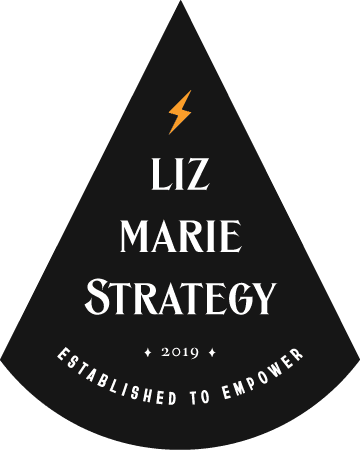Brand moodboards are one of my favorite tools for fighting back against generic, BORING branding.
Your brand personality is the key to standing out from the crowd–and a moodboard helps translate your personality into your brand’s look and feel.
In this article, I’ll talk you through why moodboards matter and my process so you can walk away knowing how to create a mood board for your brand.
Let’s go!

Why you should make a mood board for your brand
Brand personality is one of the biggest differentiators. And if you don’t figure out how that personality actually translates to visuals first, you can end up with the boring, generic & borrowed branding.
Moodboards set the tone for your entire brand
Have you ever had someone start talking to you right in the middle of a conversation? Like they’re just jumping right into the action, and you have no idea what’s going on. You’re like, “wait, back-up, I need context. Set the scene; who was there?”
That is how I feel when someone starts the design process with a logo. You don’t have any context or vision for what the brand itself is supposed to look like – you need the big picture! You need to know the vibe you’re trying to create before you can get into the little details like a logo.
Mood boards are the first pass at capturing the vision of a brand. But if you don’t set the stage and create that vision, how will you know what you’re working towards? The details will all be disconnected – you’re working with the little pieces, not the big picture. This is why mood boards are so important.
Moodboards give you a vision to measure against
As you build out your brand identity, the moodboard can guide all of your other decisions: type, colors, photography, logo.
Not all designers do them, but they’re key for me. It helps me set the objective for the whole brand project. When working with a client, it’s something we can always measure against and return to. I’ll start by making them a mood board with lots of options, they’ll give feedback, and we’ll make tweaks, and once we’ve landed on the right one, we refer to it throughout the design process. Everything echoes back to the mood board. Does it capture that mood?
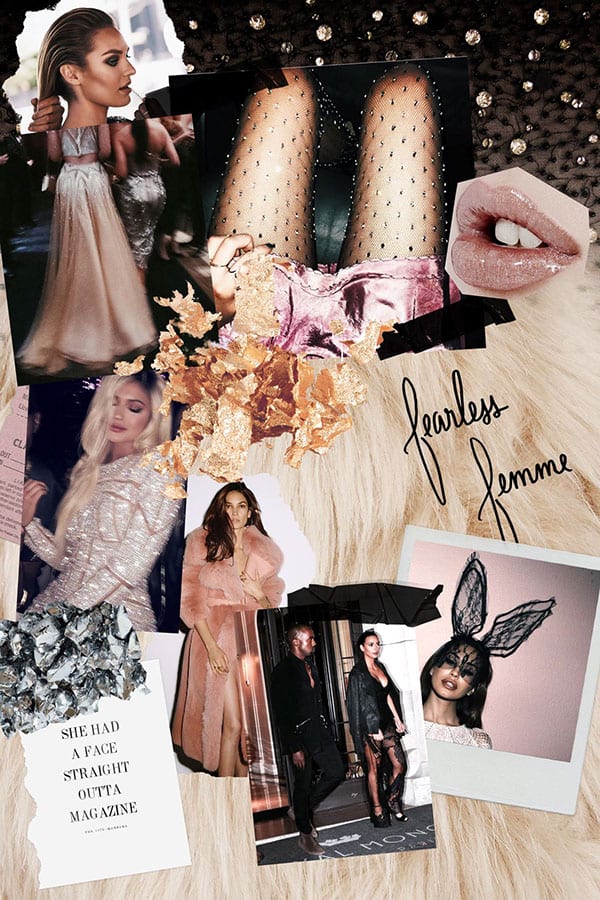
The Mood Board Process: #1. Brainstorming
When creating a mood board, I always start with brainstorming. As I said before, I’m usually doing this behind the scenes right from the get-go – it’s just how I think.
Brainstorm who your audience is
Whether I begin a project with a super in-depth strategy-focused deep dive or get right into design, I always start with a questionnaire and try to get a feel for them and their audience. Knowing the audience is critical as we want to know who this is for. Obviously, it’s important to identify your personality as a brand, but we also need to make sure that it resonates with your ideal client. What part(s) of your personality is going to connect with who they are? If those are a match made in heaven, we’re in good shape!
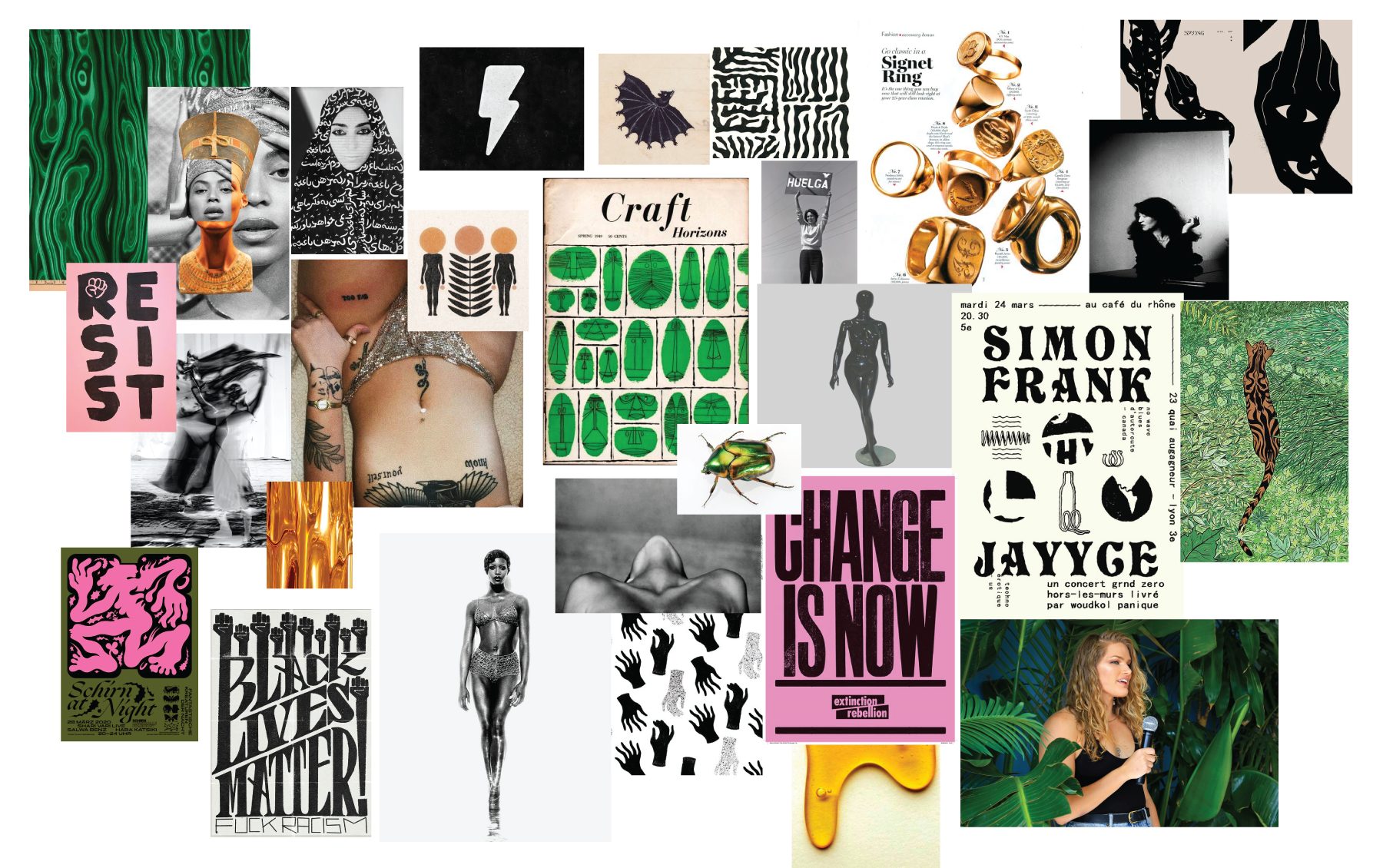
Define the vibe you’re trying to create
By vibe, I mean just the overall feeling. Colors, shapes, smells, emotions, all of the things you’re trying to capture. When you’re brainstorming, you want to think about the words or feelings you’re trying to convey,
When I was re-branding myself, I wanted to feel moody, mysterious, a little quirky, kinda sexy – I’m a Scorpio, after all.
You then want to brainstorm more specifics: colors, visuals, reference points. For example, I worked on a brand for a sexologist who did not want to use actual nudity or typical representations of sex. Instead, she wanted to use pictures of beds and sexy bedrooms. So when I went into the mood board process, I knew what to look for.
Colors
As you can likely imagine, colors are an excellent reference point. We all have favorite colors and colors we hate. Color has so much emotion and psychology tied to it that if there are any that stand out immediately, that’s a great point to brainstorm off of.
Texture
I also really love incorporating textures. Is it soft, rough, metallic? Are there any textures that just feel right to you? For example, if you work in something natural, you could incorporate textures like grass, leaves or clouds. If you’re in construction, you could incorporate close-ups of wood or concrete. For my brand, I love animal print and high contrast like something luxurious paired with a metallic, like steel.
Visuals
When capturing the vibe, the last piece is the visuals, graphics – the touchstones of the industry you’re in. Whether it’s skincare or the movie industry, there’s iconography that people associate with it and a culture you can draw from. Now, you don’t want to be generic or lean too heavy on these, but they’re good jumping-off points.
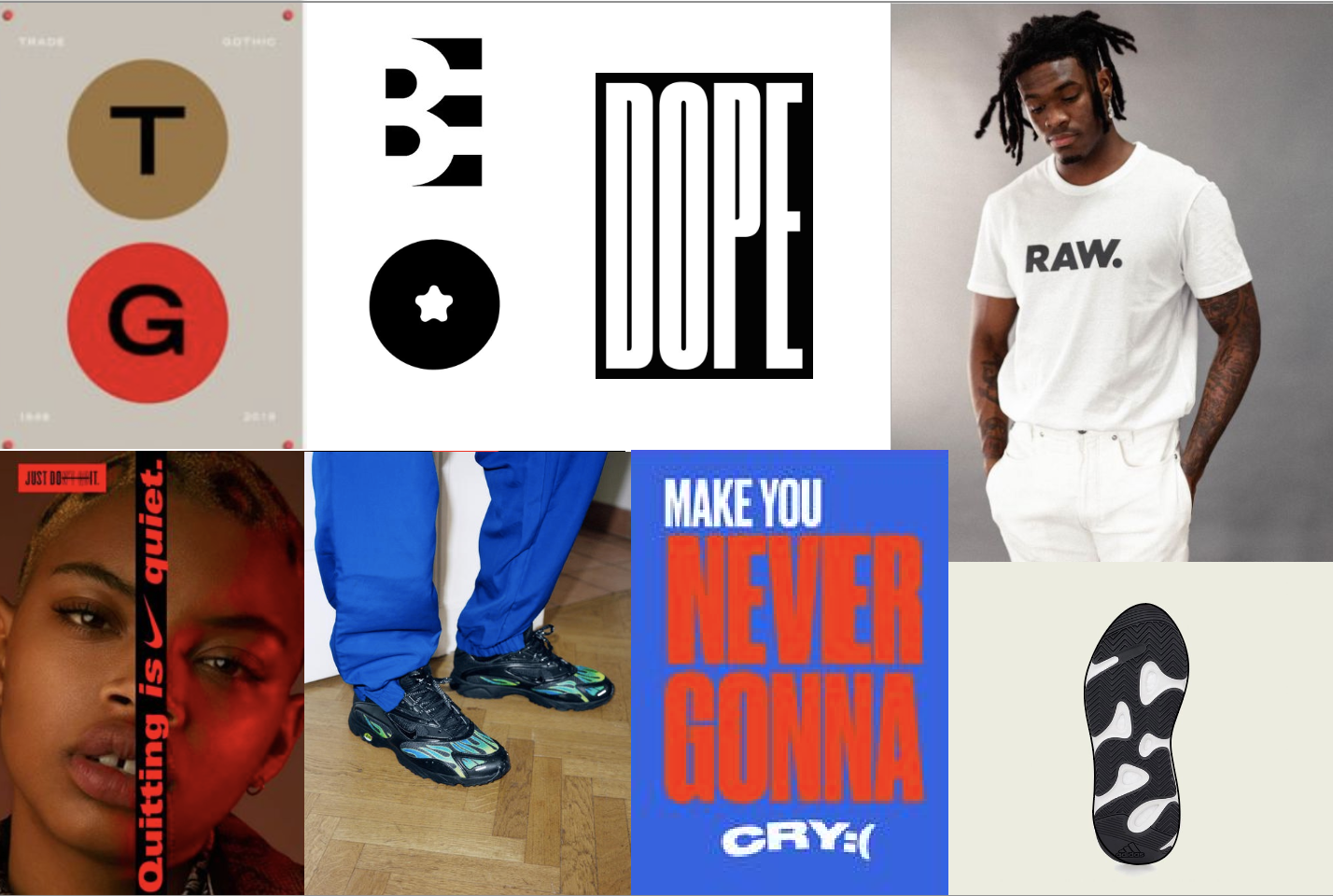
The Mood Board Process: #2. Finding images for your brand moodboard
Obviously, it’s all about photos. While the old-school way of flipping through books and magazines is cool, the internet makes it so easy to get a really specific vision. It’s totally up to you how you want to go about it – it’s all about doing what feels good for you!
My favorite image sourcing places are Pinterest (obvi), Designspiration, Dribbble for anything design specific, Instagram, and Tumblr (but maybe that last one is just my generation).
Pinterest is pretty much the go-to. I like to start by searching for one of the ideas from the brainstorm. From the Sexologist example, I might search for something like “sexy bedrooms.” It’s about finding one jumping-off point, and then you’re going to leapfrog down the rabbit hole. I’ve got a few tips for you from using Pinterest for a million years:
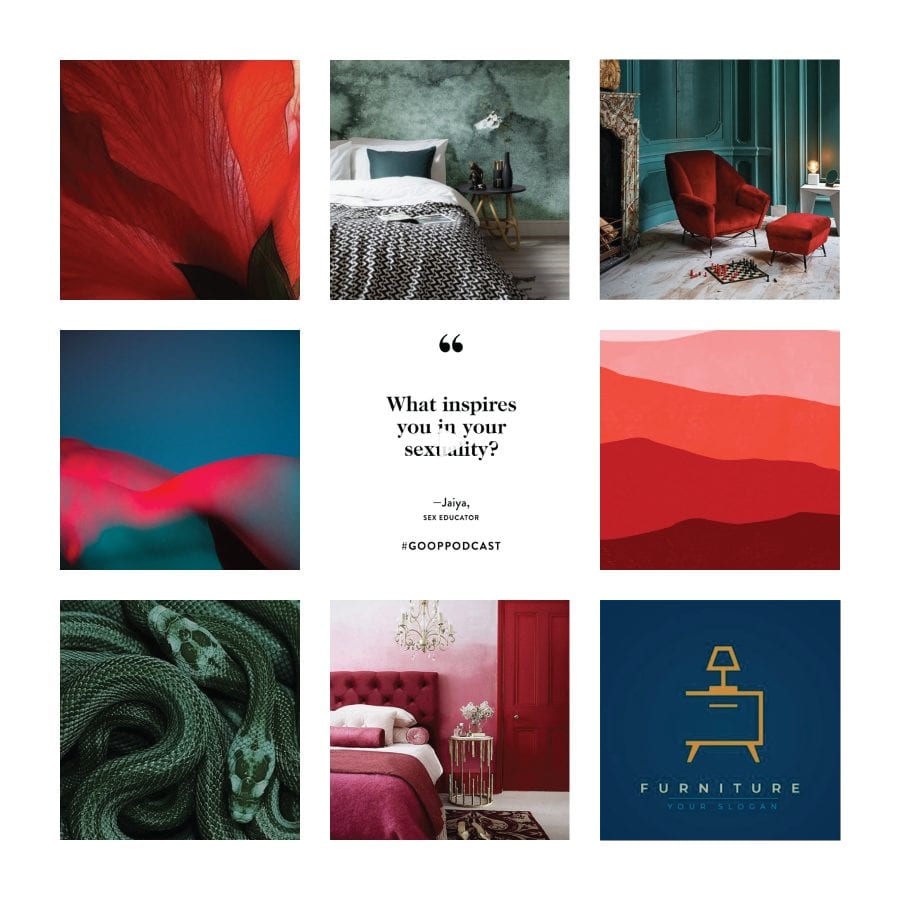
My Top Pinterest Tips for Creating Brand Mood Boards
Add “aesthetic” after pretty much anything.
Adding the word “aesthetic” when you’re searching makes it more likely you’ll get the visuals, especially if the core term is something like a product where it may just end up with product pics. Aesthetic = pretty pictures.
Find “related pins”
If you find a pin/photo that’s in the vein of what you’re looking for, there’s going to be related pins underneath it.
Use “more pins”
Once you start adding pins to a board, you’ll see the “more pins” tab, suggesting pins to add. You’ll need to have your board pretty filled out before good stuff starts getting suggested, but once you do, you’re gonna find gold. Pinterest is really good at this.
Look at your industry with caution
Be careful not to look too much at your competitors. It’s great to see what’s out there, but you don’t want to get stuck on that to the point of mimicking or where you can’t think of ideas past what you’re looking up. So, check out visuals in your industry to see what others are doing but do so with a passing glance.
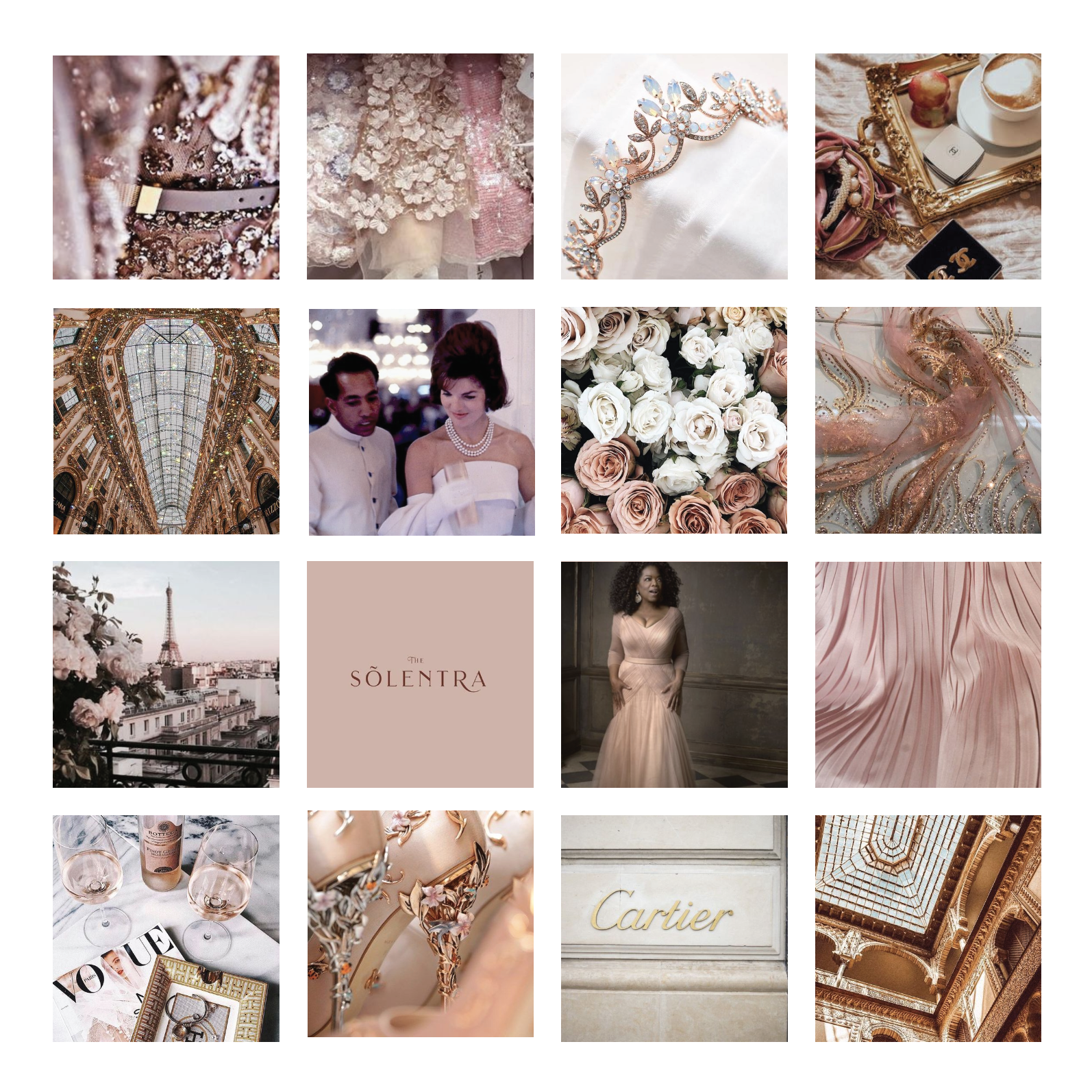
The Moodboard Process: #3. Making the moodboard
Once you have a good bunch of images (aim for a solid 30 or so) it’s time to pull it all together.
Pick your platform
Find the medium that works best for you: Adobe Illustrator, Canva (they have a free version), printing it out and doing it by hand, Powerpoint, Google Slides, whatever feels comfortable for you. It doesn’t need to be something intensive like Illustrator; you just need to be able to add a bunch of photos and easily move them around. Once you figure out your medium, it’s time to have some fun.
Check out this video where I walk you through how I take all of these different pieces and fit them together into a cohesive mood board. Let’s get started!
Pair the images together
Start with 2-3 images that jump out at you the most–the ones you absolutely MUST use–and add them to your template.
Next, look back at your source images and try to find others that will complement them, without stealing the spotlight.
Contrast is key. You want to balance:
Points of emphasis vs. whitespace
Not every image can be a focal point–or you won’t know wherre to look! Some are the star and some are the supporting cast. Let the star images breathe, by surrounding them with simpler images and whitespace.
Rich in detail vs minimal
Balance images with a lot of detail (for example, a bustling city street) with something more simple (like a logo on a solid background)
The final product vs the vibe
Balance photos of your actual product/service with others that just add to the mood. For example, if you make high-end luggage, you could uses photos of a suitcase, a chic traveler walking through the airport and a luxury resort.
Color vs muted or monochromatic
Vivid, colorful photos attract the eye. Incorporate other monochromatic or neutral colors to create balance.
Texture vs photo
Incorporate some simple textures (ex: marble, snakeskin, paper, wood, leaves, clouds, etc) or patterns (ex: polka dots, plaid, stripes, herringbone, etc), in addition to photographs of people, places + things.
Play!
This is the fun part. Keep playing and rearranging until you it just feels right!
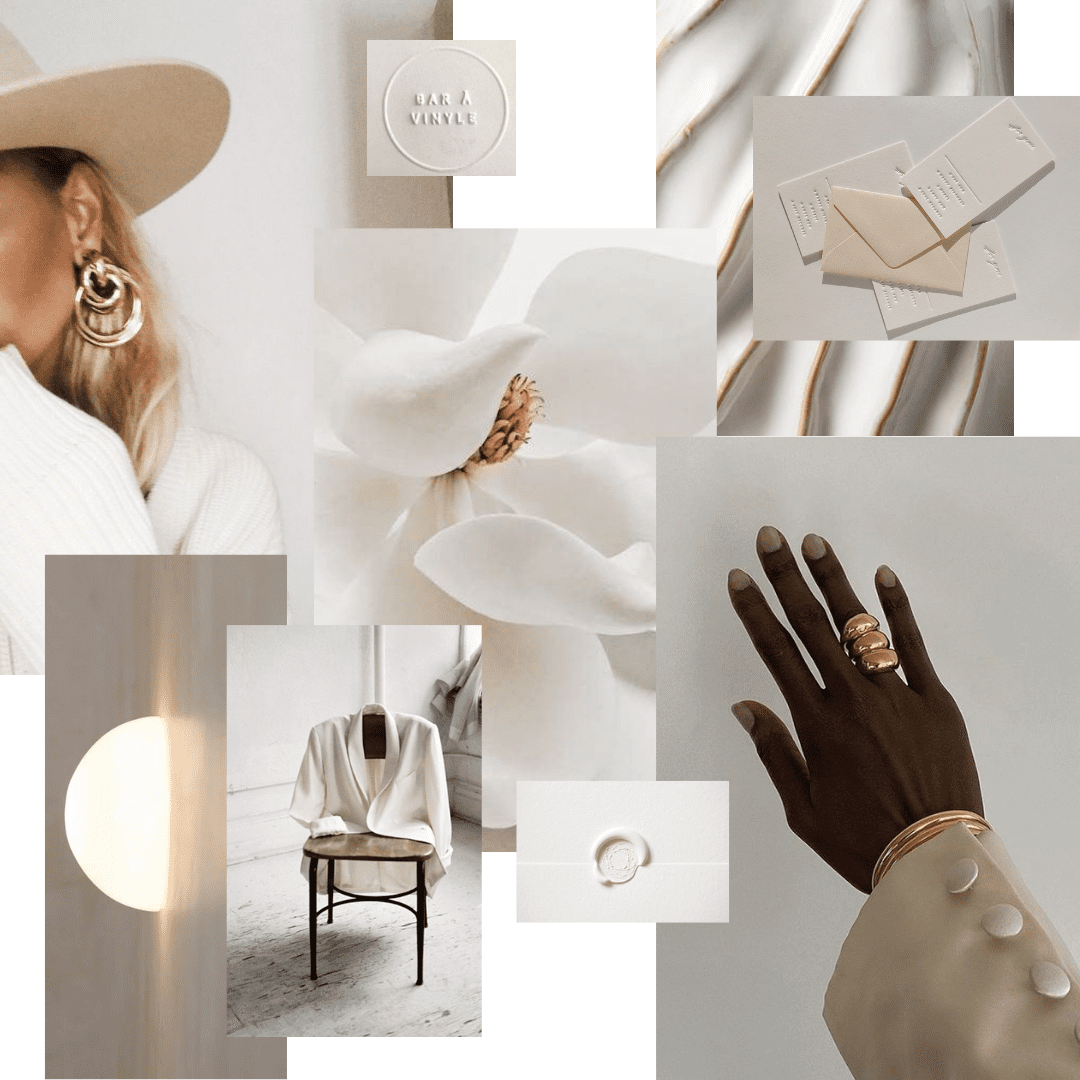
How to use your brand mood board
You’ve made your mood board, now what do you do with it?
Use it as inspiration for your branding
It can be so challenging for non-designers to create their branding. You know the style you like, but you’re not sure how to break it down into the individual components of design, and that’s where a mood board comes in. You break that aesthetic down into smaller chunks and pinpoint what resonates with you from each thing in your board.
A mood board that captures your personality is the basis of your brand identity design.
I’ll use the color picker to work on a color palette, any typography to work on logo design or as inspo for the type to include, and for the photography style and different patterns or textures I want to use in that brand identity.
For example:
Say you have a lot of black and white imagery – well, maybe you want to consider using a lot of black and white in your brand. Or say you have a hand-drawn pattern – that could be a sign you want hand-drawn imagery in your branding. You’re able to pull out those individual elements that create that mood.
If you already have a brand identity, you can pull in some of these elements and see if they fit together. How can you bring the aspects of your brand identity you already have to life using the mood board’s look and style?

TL;DR
Your brand should absolutely have a strong personality. This is one of the biggest differentiators of your brand.
Don’t know where to start? Start with your personality.
Find visuals that you like and create an aesthetic around your own personality. Connect the mood, vibe, feeling you’re trying to capture with your audience so that you will resonate and have a match made in heaven.
Try My Canva Brand Moodboard Template
Canva is an easy-to-use (and free!) tool that will make creating moodboards a breeze! I’ve created a simple moodboard template to get you started.
